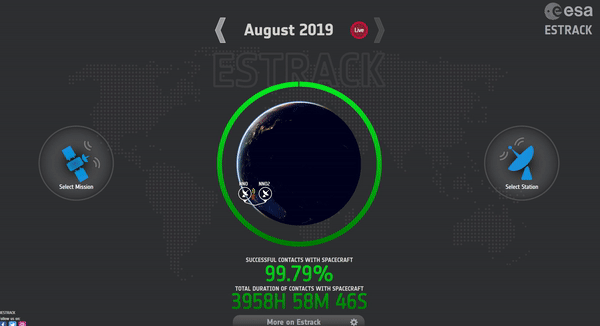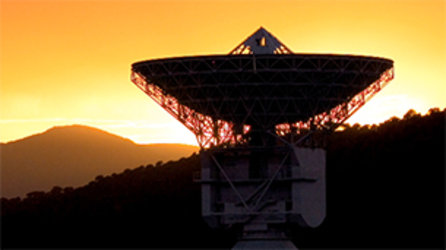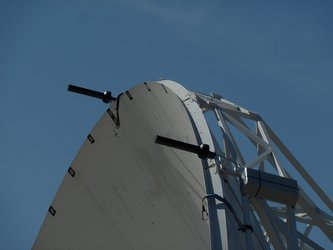ESTRACK now - the guide
Launching spacecraft into orbit around Earth and on voyages through the Solar System relies on a network of antennas and ground stations across the globe.
ESTRACK now allows you to find out out exactly which spacecraft are communicating with which ground antennas at any moment, via http://estracknow.esa.int.
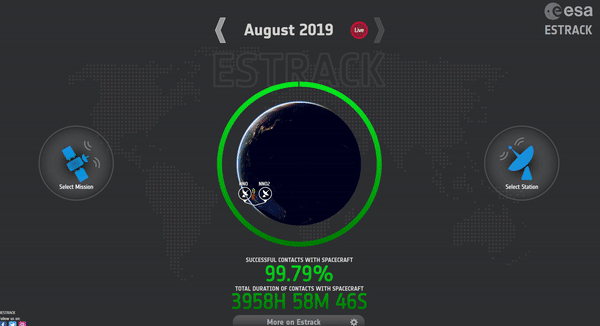
Discover more about ESA's fleet of explorers studying our planet, exploring the Solar System or peering out to deep space.
Or, you can explore the impressive dishes and antennas at ground stations across the globe, working every day to gather all of the vital information returned from space and sending commands direct from mission control.
Key terms
- AOS - The beginning of a pass is called the ‘acquisition of signal’ or AOS. It is the moment that a spacecraft becomes visible to a ground station and telemetry (see definition below) is gathered.
- LOS - The end of a pass (see below) is called ‘loss of signal’ or LOS. It is the moment that a spacecraft is no longer visible and telemetry is no longer received at the ground station.
- MNT - preventative, predictive or corrective maintenance.
- Pass - The term ‘pass’ or ‘contact’ describes the period in which a satellite and ground station are in contact, specifically when a satellite or spacecraft is above the horizon, and therefore visible, from the point of view of a particular antenna or ground station.
- Round Trip Light Time or RTLT - The time taken for a signal (light) to travel from a ground station on Earth, to a spacecraft, and back to the station. From the RTLT the distance to the spacecraft can be easily determined.
- Successful contact - A successful contact means a signals have successfully been sent from the ground station to the spacecraft or picked up by the station from the spacecraft as planned.
- Percentages describe what proportion of time during a ‘pass’ that contact is successful.
- A traffic-light colour system makes it easy to visualise the performance of the network. Green indicates perfect contact between a station and spacecraft, yellow suggests contact is near-perfect and red would suggest a contact which has experienced some issues.
- Telemetry - Telemetry is the collection of measurements and data gathered by a spacecraft. The word is derived from the Greek tele meaning ‘remote’ and metron, meaning ‘measure’.
Example BepiColombo and the New Norcia ground station
To find out more about individual ESA missions - how far away they are, what is their objective, which ground station are they currently in contact with - click on “Select Mission” on the left.
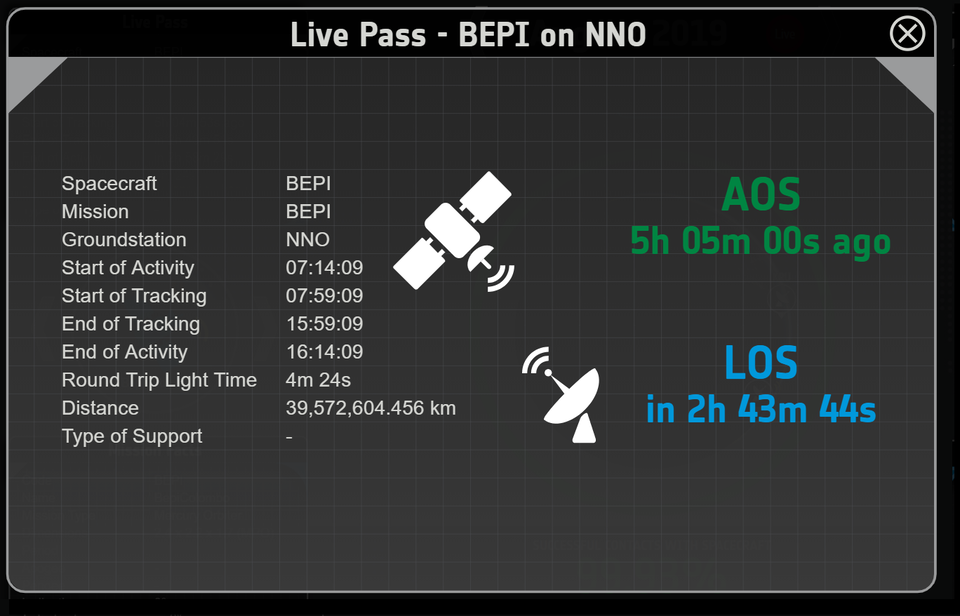
Choose from one of the ESA’s 11 current missions, for example BepiColombo, to find out when it will be visible and how far away it is.
The 'Live Pass' box on the top-left reveals that (at the time of writing) BepiColombo has been in communication with the New Norcia station (NNO) in Australia for three hours and will remain visible for another five hours.
With a round trip light time of 4m 24s, BepiColombo is 39.5 million km from home.

Discover more about individual ground stations including where they are, what they can do and who they are ‘talking’ to, by clicking “Select Station”, for example New Norcia, NNO.
At the time of writing it is cloudy at New Norcia station, located at an altitude of 252 meters in Western Australia.
The NNO station hosts a 35-m deep-space antenna which is currently in contact with BepiColombo, Europe’s first mission to Mercury.
Question?
If you have a question about ESTRACK now, get in touch with us via @ESAoperations on Twitter.
For more information about ESTRACK visit the homepage, here.



